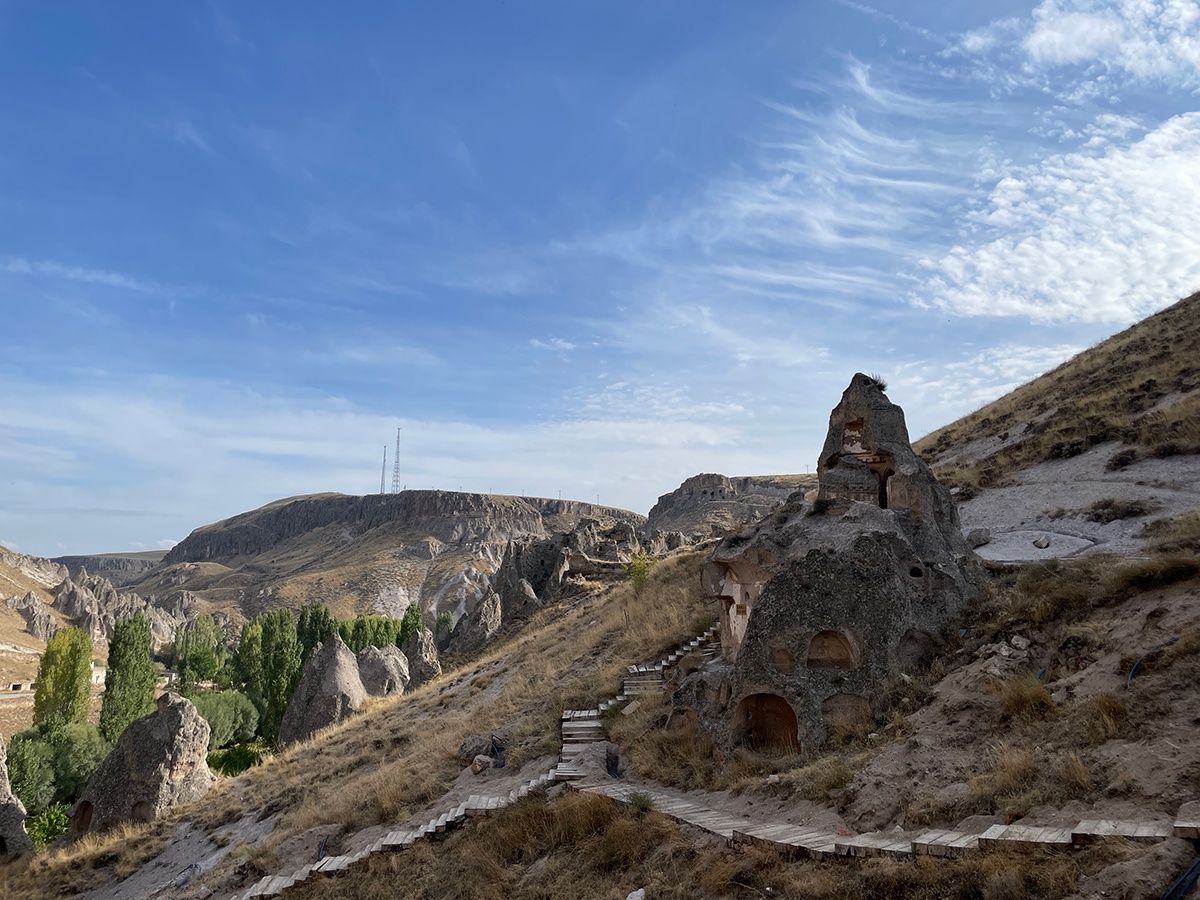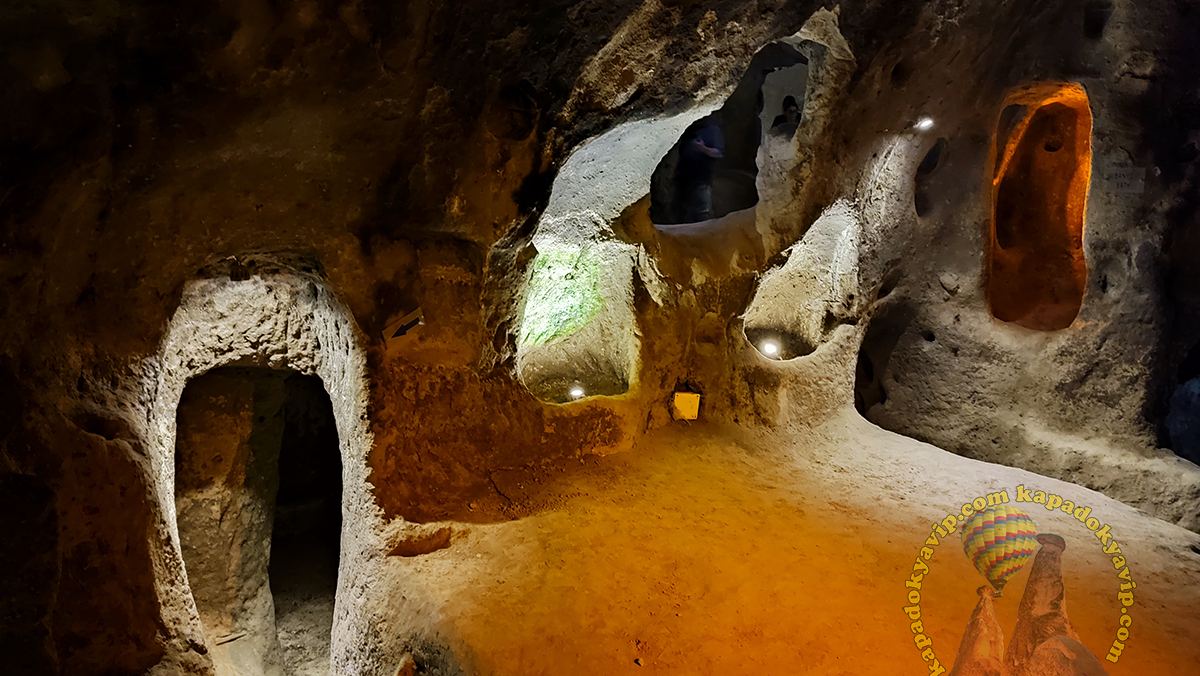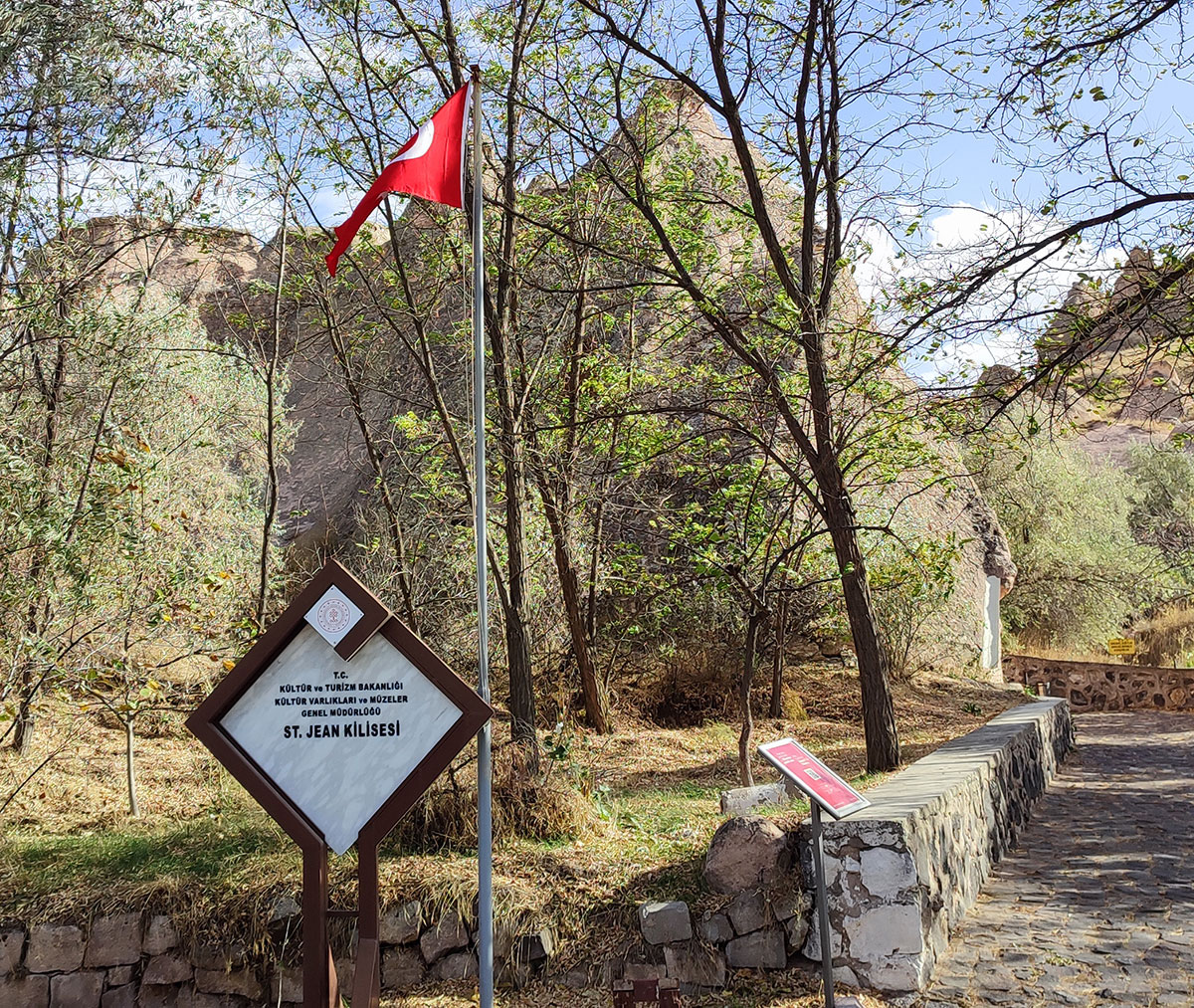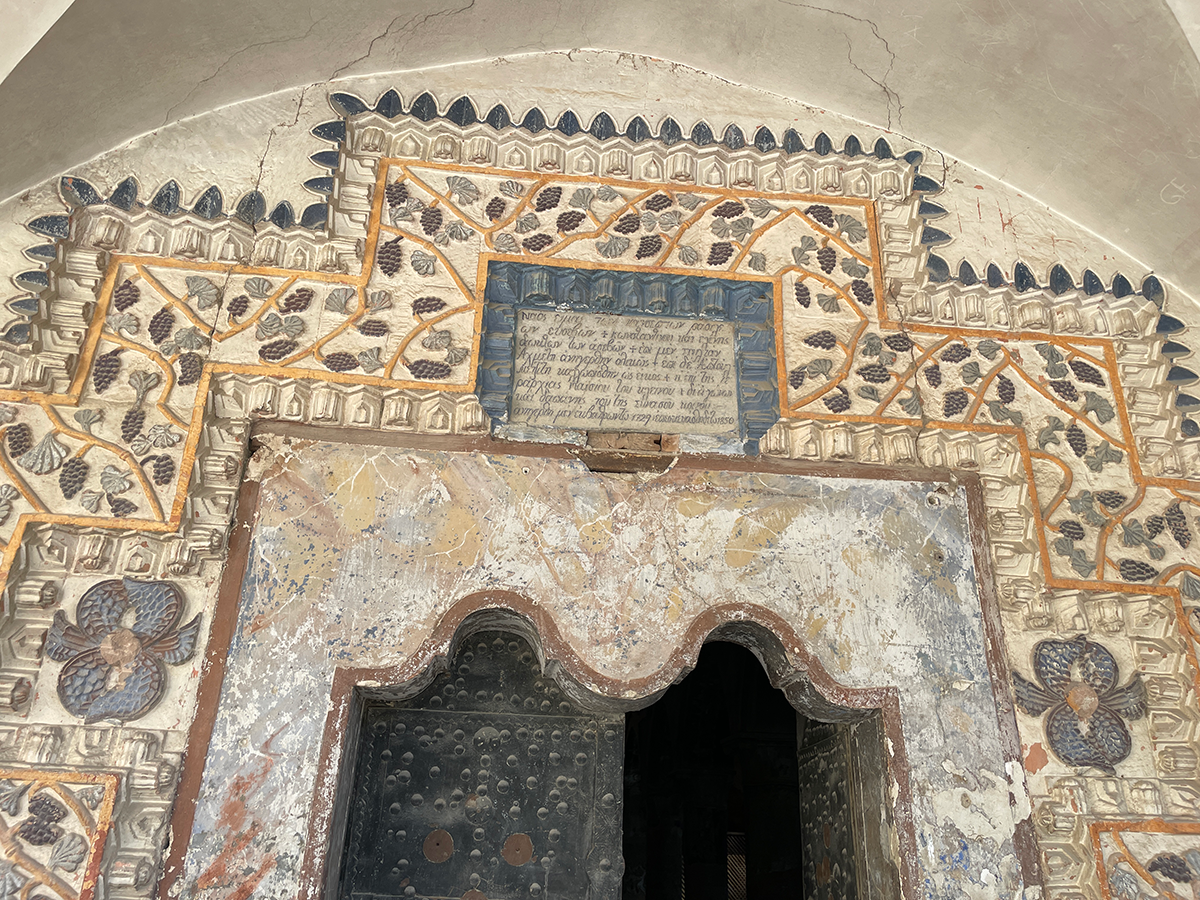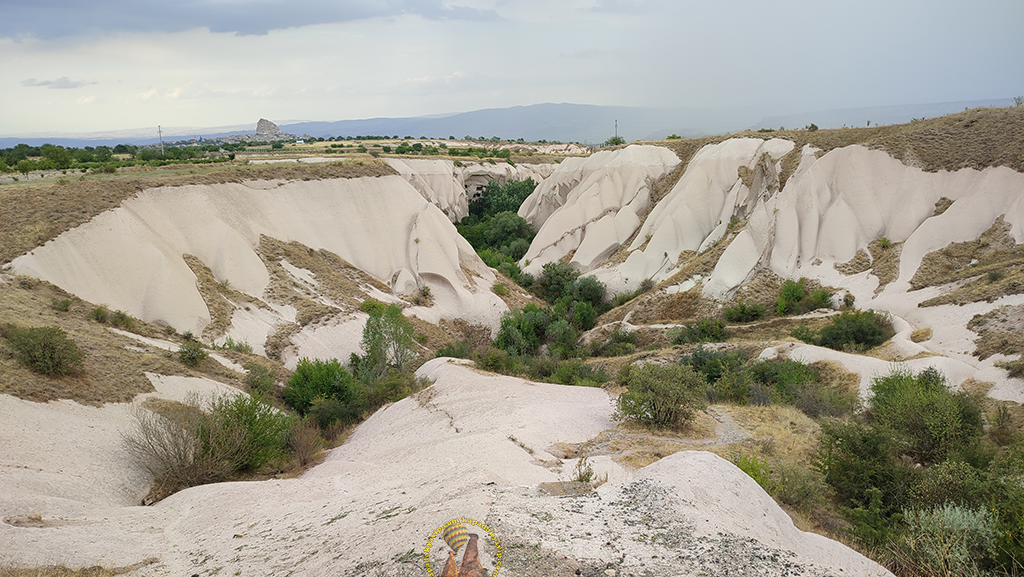
Aziz Vasilyos church is located 1 km away from Mustafapasa. The church is situated to the north and can be reached by a 20-minute walk from Beyderesi Valley. While walking, visitors can observe numerous fairy chimneys, rock-cut tombs, and rock shelters. Even before reaching the church, visitors may be treated to a visual feast of the unique geological formations in the area.
Aziz Vasilios church, located in Mustafapasa, Cappadocia, is visible on the east side of the valley at a height of approximately 50 meters. The church, known as Aya Vassilios in world literature, is carved from rock, layered, and used as a monastery church. Unfortunately, it had a ruined appearance before restoration efforts began. Subsequently, restoration work was carried out, transforming it into a place that people can visit comfortably today.
This church holds significant importance among Cappadocia’s treasures, with its most notable feature being its status as the only Post-Byzantine style single-rock church painted in the region until the 20th century. Its historical roots are estimated to date back to the 19th century. Access to the church is through stairs, and there is a small room at the upper side of the valley that leads to the interior. The architecture of Aziz Vasilios Church on the ground floor is quite intriguing.
The church has a single row of nave columns and consists of two parts. The left section has a flat ceiling, while the right section is built with a barrel vault. Above the naos dome on the church’s ceiling, there is a Pantokrator Jesus depiction with the signature of the fresco artist Georgiu Yordanidou and the date 1915. The artist’s signature is also found on the wall paintings of nearby houses, indicating his work in the region.
The walls feature saints depicted within medallions, along with images of the apostles. The fresco of Saint John among these figures is unique to this church, setting it apart and adding significance. Other frescoes include scenes of Jesus and Mary, as well as the Baptism of John the Baptist. The Deesis scene is also portrayed, and the figure of Jesus in these frescoes gains importance in terms of late-period fresco art. The stairs inside the church lead to Beydere.
To truly appreciate the nuances of art and experience the traces of the past up close, a visit to this church within the borders of Mustafapasa in Cappadocia is highly recommended.
People who want to visit the church often ask the question, “Who is Saint Vasilios?” Saint Vasilios, widely regarded as a significant figure throughout history, holds the distinction of being one of the three great scholars in the trinity concept, earning him the title of “Great” in history. Born in Kayseri, this sage grew up in a divine and Christian environment. He received a long and excellent education, not only considered exceptional in the early years of Christianity but also seen as an exemplary individual for all of humanity throughout time. With his extensive knowledge and the absence of any field of science he did not study, Saint Vasilios has gained considerable importance.
St. Vasilios Church Features
The church holds a unique place among other churches in the Cappadocia region due to its architecture and the late-period artworks on its walls. It is of significant importance in the Cappadocia region as it is considered a late-period masterpiece. Depicted on its walls is Jesus wearing a king’s crown. The famous Deesis scene, featuring Mary and John the Baptist, is also portrayed. Other scenes include the Resurrection of Lazarus, Baptism, and themes related to Jesus. Additionally, wall paintings include Horseman Saint George, crosses, and geometric patterns.
In addition to these frescoes, there are framed paintings reminiscent of tableaux. These paintings feature saints, angels, Crucified Jesus, and Luke. Unique to this church, the fresco of Saint John from Urgüp is present, making the church stand out among others. This fresco is exclusively found here, contributing to the church’s distinctiveness among others.
Mustafapasa village holds great significance with its numerous historical sites. Visitors to this village should not miss a few essential places. The Mehmet sakirpaşa Medrese, located right in the square, is the first place that should be visited. Afterward, individuals can visit another church, the Monastery of Saint Nicholas. It is one of the religious structures near the village, respected by both Muslims and Christians. The Church of Constantine and Helena is another open-to-visitors church located in Cumhuriyet Square, with noteworthy frescoes inside.
Saint Basil Chapel is approximately 2 km away from the town. Dated to the Iconoclastic period, this structure has a two-apsed and rectangular plan. The Hidden valley, one of the most beautiful valleys in Cappadocia, is definitely among the must-see areas. Named after its owner Mehmet Balta, the valley is in a challenging location, hence the name “Hidden Valley.” Heading southwest in the village square leads to the valley. At the entrance of the valley, there is the Church of Saint Grigorios, a small basilica-style church. The church was rebuilt by the local Greeks after its original construction. It has a single apse and two graves inside, believed to belong to those who worked on the church’s restoration.
The Cappadocia Art and history museum, established in a 150-year-old mansion, is another essential place to visit in the vicinity. Reflecting Cappadocian culture, it contains elements that depict the region’s history and art.
Aziz Vasilios church is located in Mustafapaşa Village within the Urgüp district of Nevsehir, drawing the attention of tourists with its unique features. It is a must-visit destination for every traveler organizing a Cappadocia trip.
Mustafapasa Village is situated 5 km south of the Urgup district. The village is known for its churches and monasteries, featuring beautiful mansions and caravanserais. It holds the distinguished heritage of the once-thriving Greek population that lived in the village. Therefore, it is of great importance in terms of tourism.
Aziz Vasilios church is located 1 km from Mustafapasa village. After Beydere valley, visitors can reach the church by walking for about 20 minutes. This walk provides a visual feast with numerous fairy chimneys, rock-cut tombs, and cave dwellings along the way. During the stroll, individuals can also witness other significant structures in the area.

